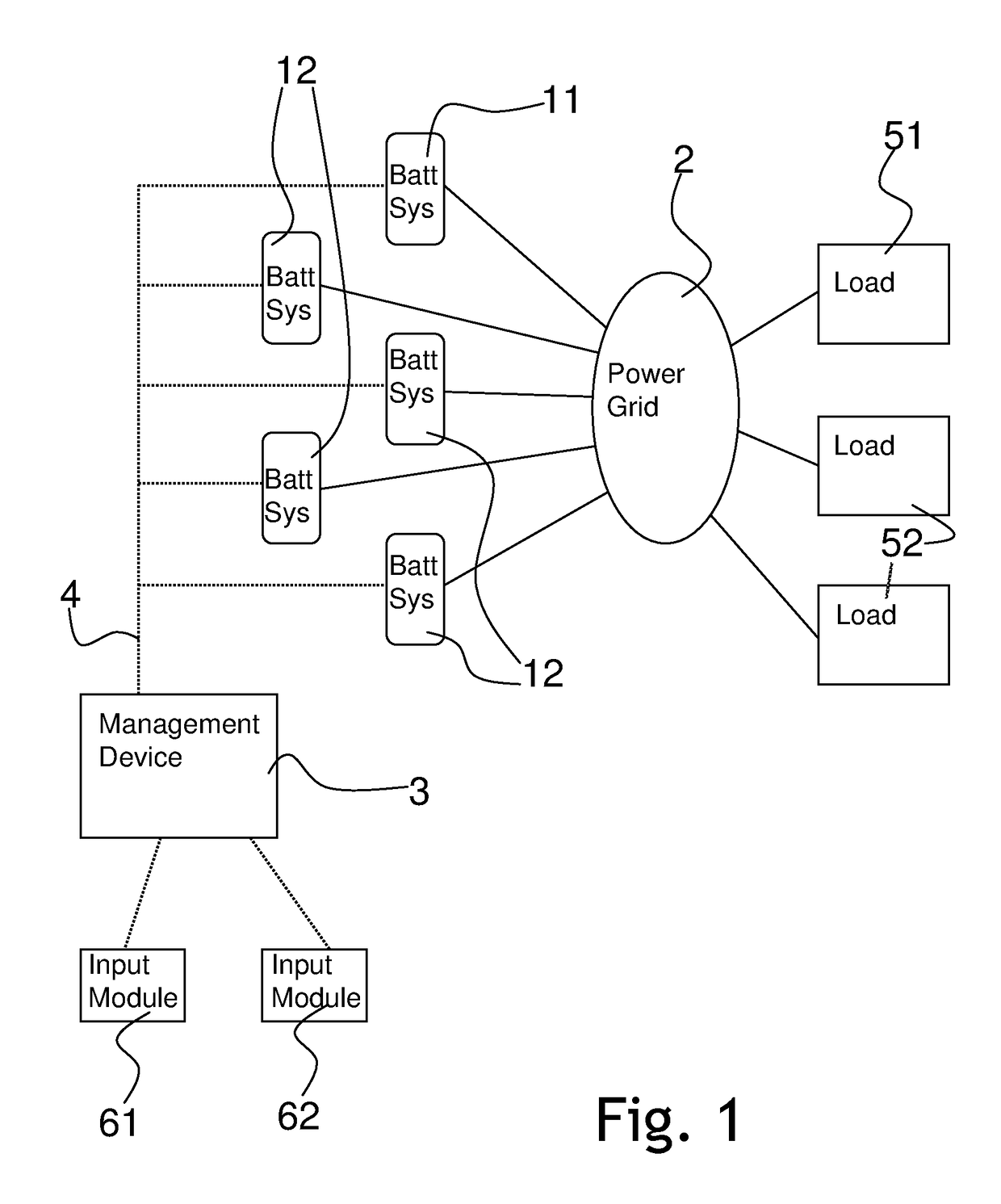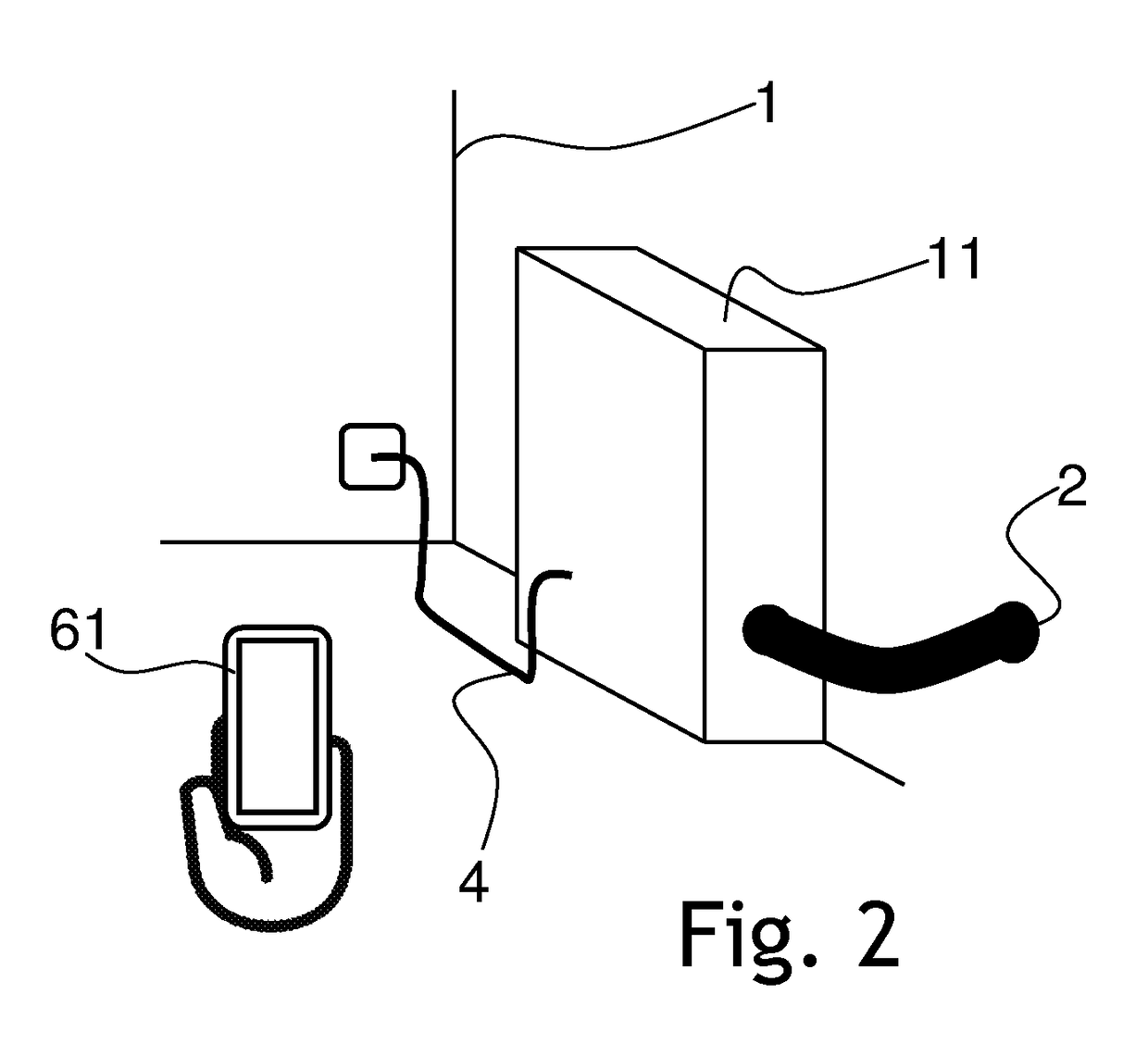Remote battery management system, management device, and remote battery management method
a battery management system and management device technology, applied in the direction of transmission, ac network load balancing, single network parallel feeding arrangement, etc., can solve the problem of power grid power supply and power imbalance, and achieve the effect of efficient and reliable grid operation
- Summary
- Abstract
- Description
- Claims
- Application Information
AI Technical Summary
Benefits of technology
Problems solved by technology
Method used
Image
Examples
first example
Immediate Action
[0044]The process according to this first example is designed for responding to a current and urgent need of the power grid for electrical power, possibly in order to avoid an impending voltage breakdown. First, it is identified that the grid has a demand for electrical power or that there is excess power on the grid that needs to be withdrawn and stored. A software module is then utilized to obtain the number of battery systems that are currently online. Then, for each of these battery systems, it is determined how much power they have in store and can supply to the grid and / or how much free capacity they have left for excess power to be stored.
[0045]An adaptive system uses previous responses of customers from previous auctions to determine an expected overall electrical power that may be obtained from the battery systems that are online through an auction. The expected electrical power may in particular depend on the number of battery systems that are online, on th...
second example
Fast Action
[0050]The process according to this second example is designed for responding to a quick need of the power grid for electrical power. However, in contrast to the first example, the demand is not an immediate one, which has to be satisfied within seconds. Instead, the response may take place in the order of minutes or hours. As in the first example, it is first identified that the grid has a demand for electrical power or that there is excess power on the grid that needs to be withdrawn and stored. A software module is then utilized in order to obtain the number of battery systems that are currently online. Then, for each of these battery systems, it is determined how much power they have in store and can supply to the grid and / or how much free capacity they have left for excess power to be stored.
[0051]An adaptive system uses previous responses of customers from previous auctions to determine an expected overall electrical power that may be obtained from the battery syste...
third example
Slow Action
[0057]The process according to this second example is designed for responding to a future need of the power grid for electrical power. In particular, this may be an example for responding to future demands for power by the grid or by a load. Initially, it is identified that the grid will have a demand for electrical power at a determined time in the future, e.g. on the next day, or that there will be excess power on the grid will need to be withdrawn and stored. A software module is then utilized in order to obtain the number of battery systems that are currently online or that have been online in the past. Then, from these parameters, it is determined, through the use of an appropriate algorithm, how much power or capacity is expected to be available during the time the demand will arise.
[0058]An adaptive system uses previous responses of customers from previous auctions to determine an expected overall electrical power that may be obtained from the battery systems that ...
PUM
 Login to View More
Login to View More Abstract
Description
Claims
Application Information
 Login to View More
Login to View More - R&D
- Intellectual Property
- Life Sciences
- Materials
- Tech Scout
- Unparalleled Data Quality
- Higher Quality Content
- 60% Fewer Hallucinations
Browse by: Latest US Patents, China's latest patents, Technical Efficacy Thesaurus, Application Domain, Technology Topic, Popular Technical Reports.
© 2025 PatSnap. All rights reserved.Legal|Privacy policy|Modern Slavery Act Transparency Statement|Sitemap|About US| Contact US: help@patsnap.com



